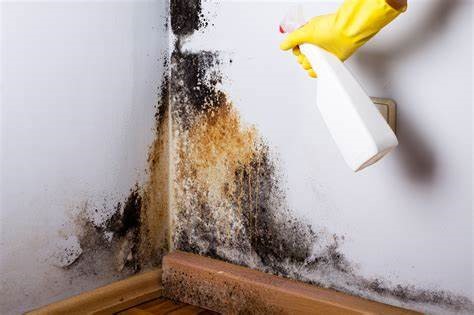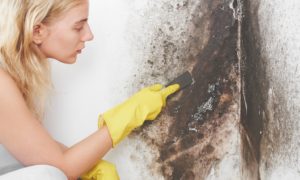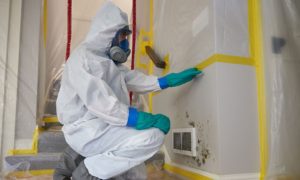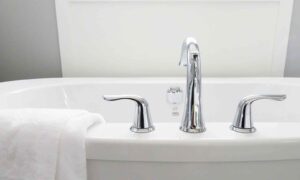The existence and growth of mold is a problem caused primarily by humidity. A high level of moisture outside or in the interior can lead to the production of mold clusters. While walls overgrown with mold threats do not look good, it can also cause health problems, especially to people who suffer from allergies. The danger of mold is in its microscopical spores which contain mycotoxins (more info). Since miniature mold spores are transported by air and they are all around us, the only way to fight them is to prevent and disinfect.
Where you can detect mold
Mold can be detected in many different places inside and outside the building. Mold can be found on the outer walls of the house which suffer from water leakage. You can find mold around damp parts of brickwork which might be caused by insufficiently dried cement, leading to cavities or thermal bridges. Inside the buildings, mold is often an indicator that masonry was not done properly, as it can settle around built-in wardrobes or in a porous base of ceramic tiles in the bathroom.
Poor ventilation and inadequate cleaning can cause mold formation on the walls and ceilings, but also under the rugs and carpets. The danger of the mold is in its capability to grow through materials and once it infiltrates it, it can lead to its destruction. Mold grows through a number of different materials, including plaster, paint, wood and textiles.
If the wall is attacked by mold, its threads spread over the surface and penetrate the plaster. However, it is not enough to paint the affected areas with plaster paint or paint, because the mold then penetrates even deeper into the plaster and the surface and eventually damages the top layers of the paint. It bursts, the mold again grows to the surface and visible spots are formed. Therefore, the only solution for the problem with mold is its thorough inspection and complete removal.
The most common types of mold
The 4 most commonly occurring species are Penicillium, Mucor, Alternaria and Aspergillus, but there are many more types of mold. If you want to know more about the types of mold that can be found in the household, here is a useful resource: https://homeairguides.com/how-air-purifiers/mold/11-types-of-mold-found-inside-the-home/
Penicillium is the most common type of mold and can be found both on spoiled foods as well as on wet walls. While there is a laboratory-made penicillium that is used as medicine, the mold in the house is of different subspecies and it has no health benefit. It produces various mycotoxins, some of which are also carcinogenic, and it has been proven that penicillium was the cause of various inflammations (inner ear, cornea, but also cardiac membranes).
Mucor is the second most common type of mold. We find it on spoiled fruit, but if it has enough moisture, it grows on almost any building material. Mucor is an undesirable phenomenon as it grows very fast and its spores and other microscopic particles that it emits into the air can be dangerous for people sensitive to allergens.
Alternaria is the type of mold that usually attacks vegetables (the so-called black spots, for example on the carrots) and other plants. In households, it can be found on damp wood, most often near window frames. If you find it at home, you should intervene as quickly as it is one of the most aggressive allergens – causing asthma attacks and other lung diseases.
Finally, Aspergillus is a yellow-green, very dangerous mold. In the home it can sometimes be found on damp carpets, but it generally thrives wherever there is plenty of moisture and warmth. Its danger lies in the secreted toxin, which mainly attacks the respiratory tract and, in extreme cases, may even cause death in individuals with poor immunity.
How to go about mold removal
While mechanical removal of mold is a logical first response to the problem, it may not be a sufficient way to get rid of mold completely. What can be seen on the surface of mold-infested material is the fungal infection, yet the decisive part, mycelium, might have spread through the material. Therefore, it is not enough to dispose of not only visible fruiting bodies but also invisible parts in the material.
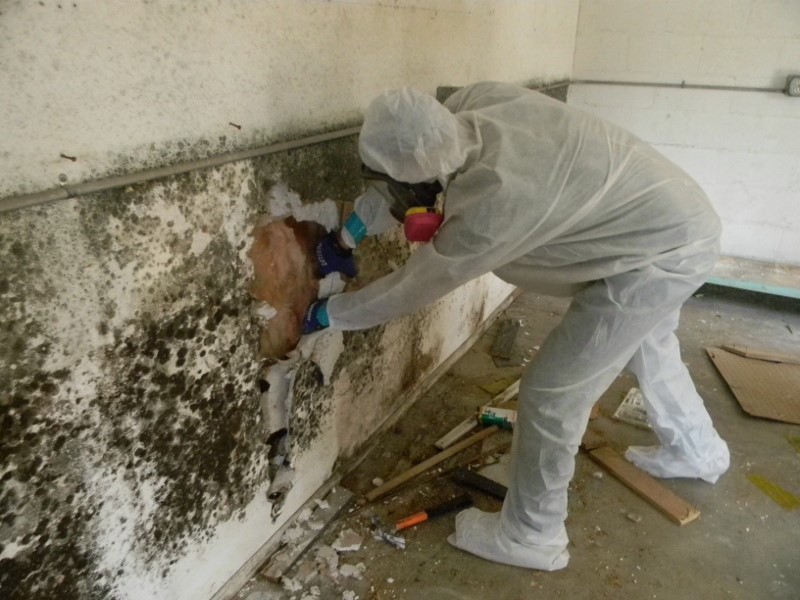
Chemical removal is another option when attempting to get rid of mold. Before the chemical removal, mold inspection has to be done to determine the kind of mold present. Both mold inspection and removal is should be carried by professional remediators to ensure that it was done properly and with lasting effects.
Steps in mold removal
The following steps are usually taken for mold remediation:
First of all, the remediator takes a microscopic amount of the mold for inspection and determination of its type. According to the type of mold present, the affected area is disinfected. This can be done by spraying, painting, soaking, wiping and immersion, or with a combination of these methods.
When the mold is present indoors, the masonry is usually sprayed, floors and equipment are washed with a suitable disinfectant with fungicidal effect. Then, all the other affected areas are sprayed from a distance of 5 to 10 cm and after 20 minutes the treated area is either washed with water or allowed to dry. In case of a strong attack it is necessary to apply the disinfectant several times. The chemical removal of mold is typically followed by mechanical cleansing, always in wet conditions, to prevent mold particles from being sprayed. Mechanical removal must be carried out to the maximum possible depth to destroy the mycelium. A regular check-up might be needed to ensure that the mold has not returned to the material.


